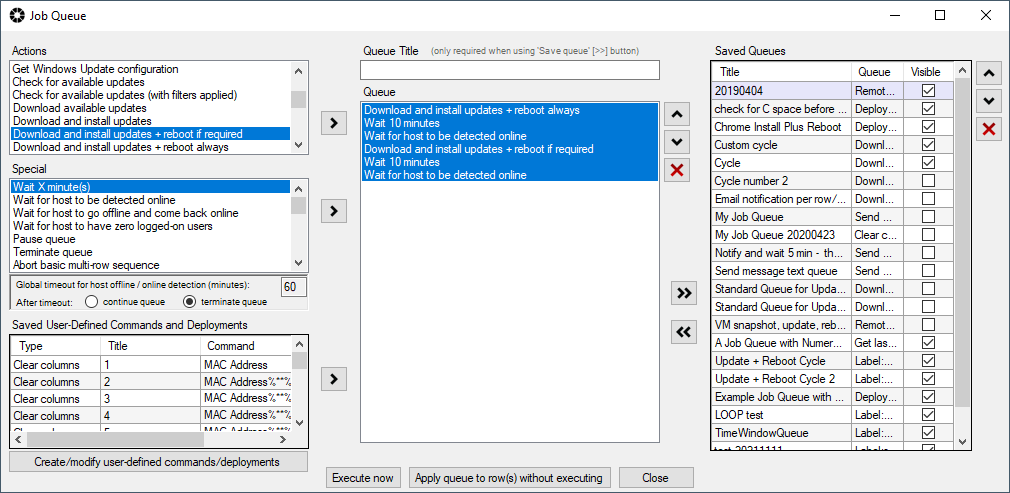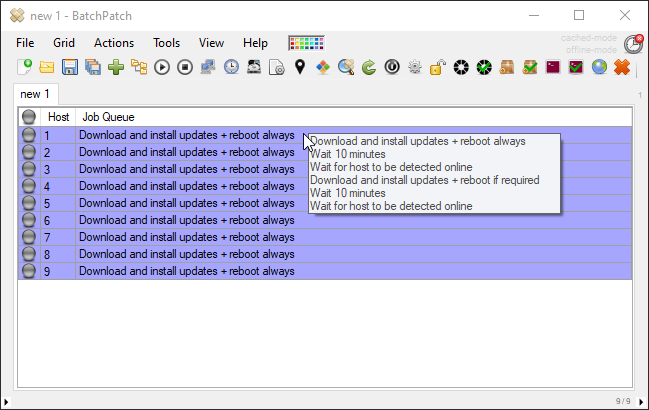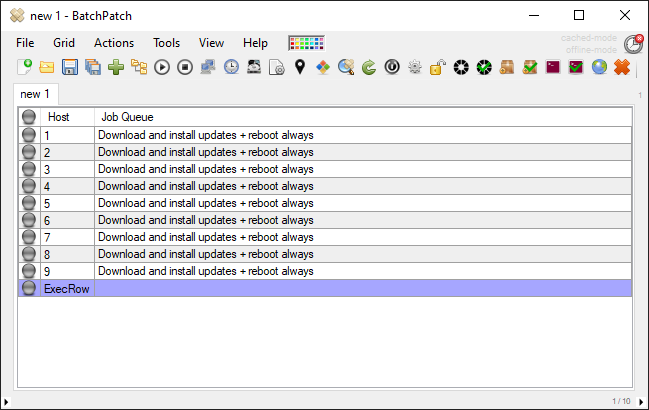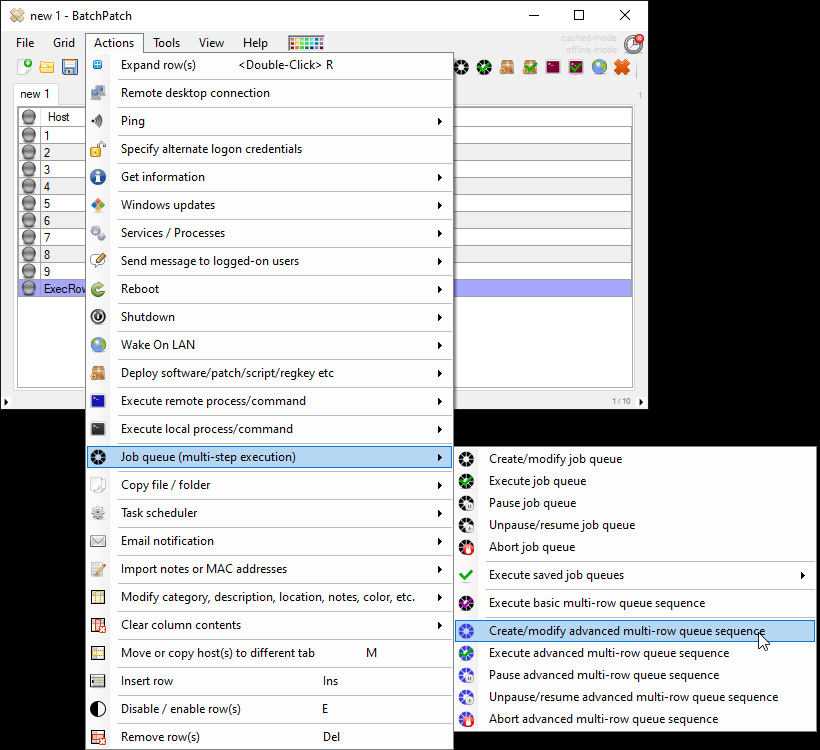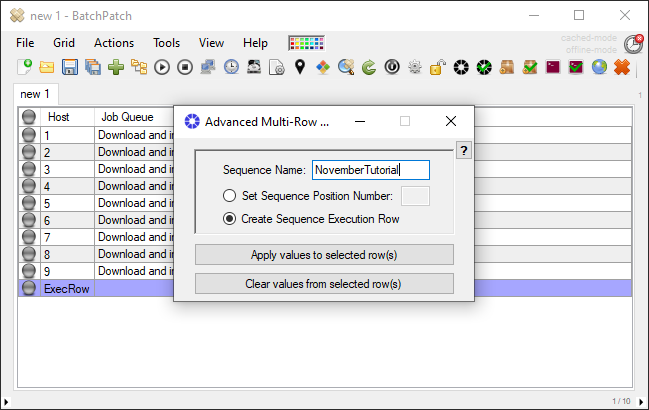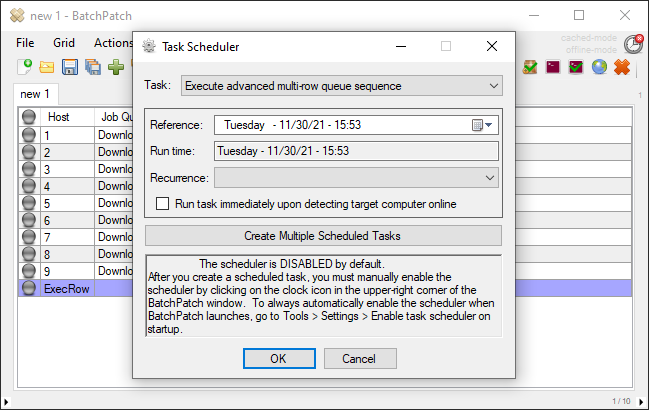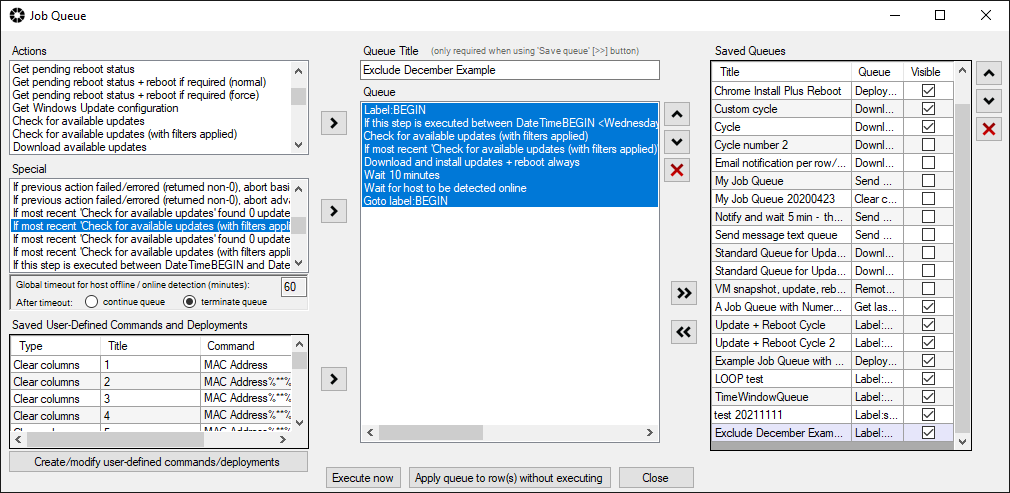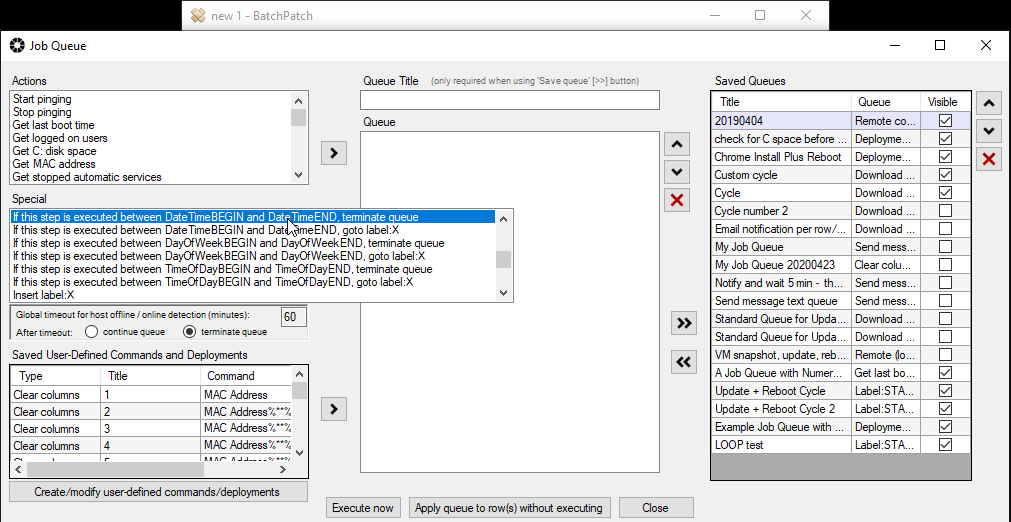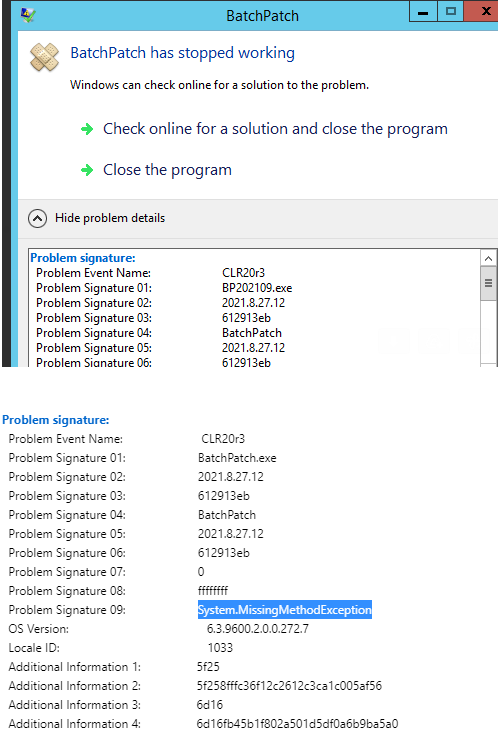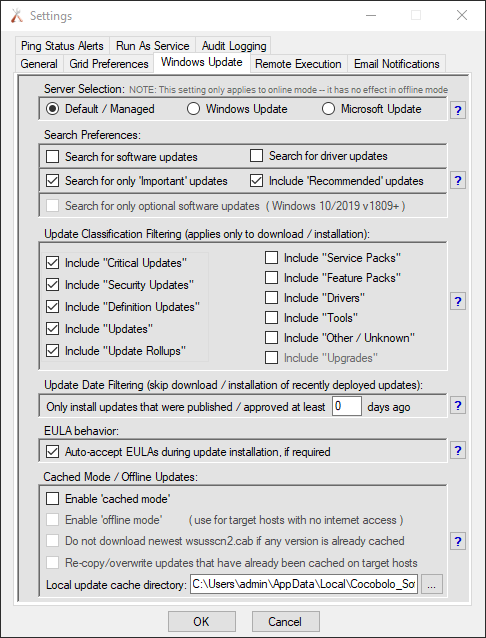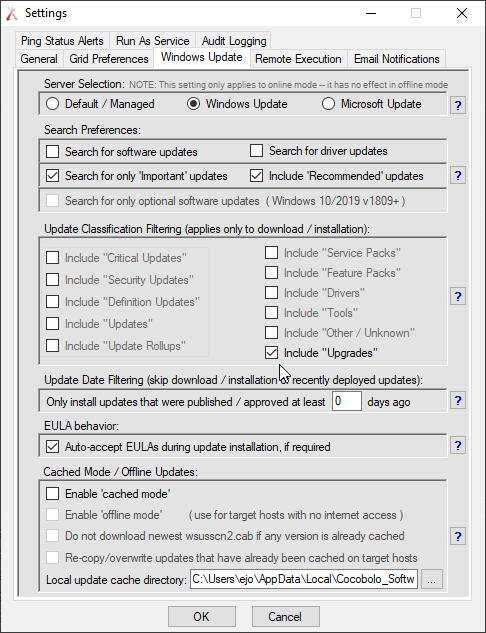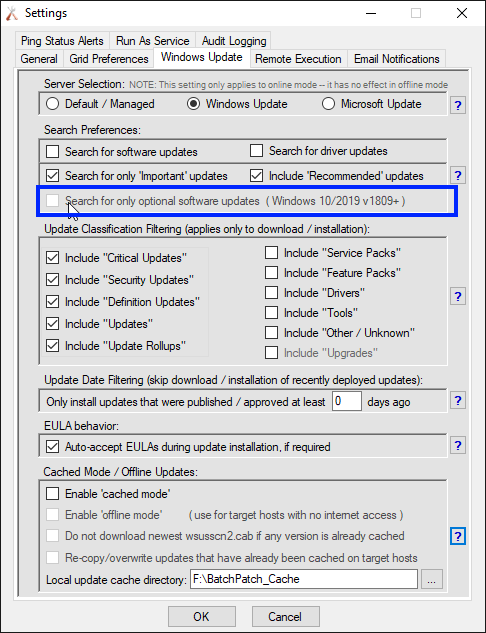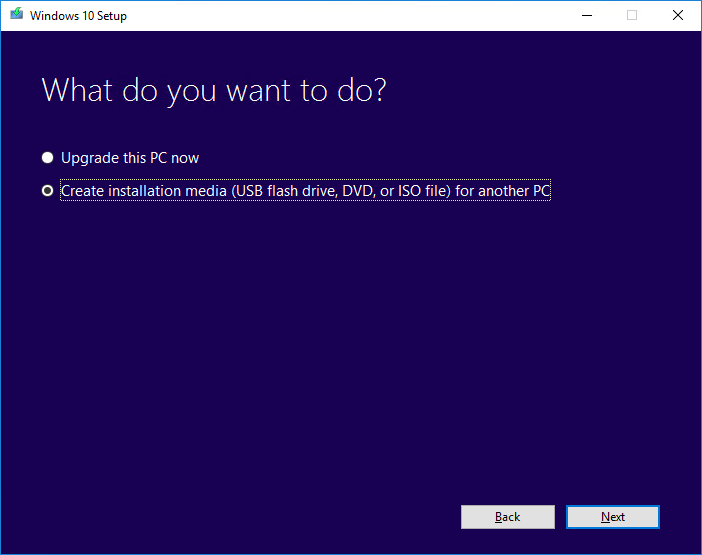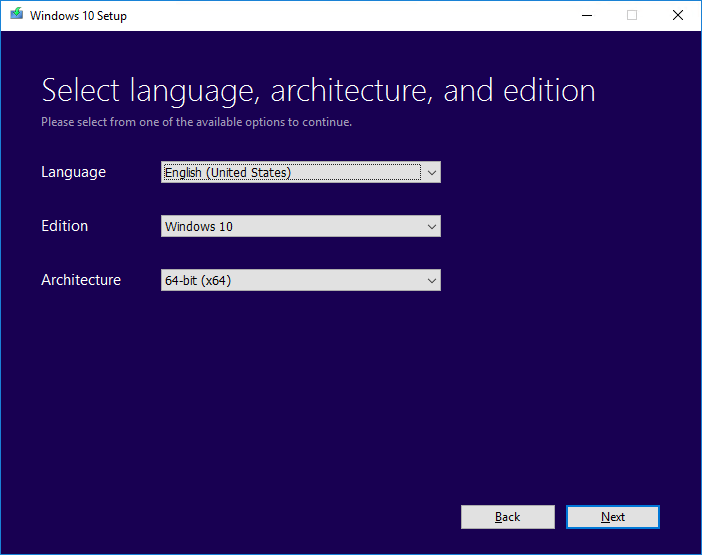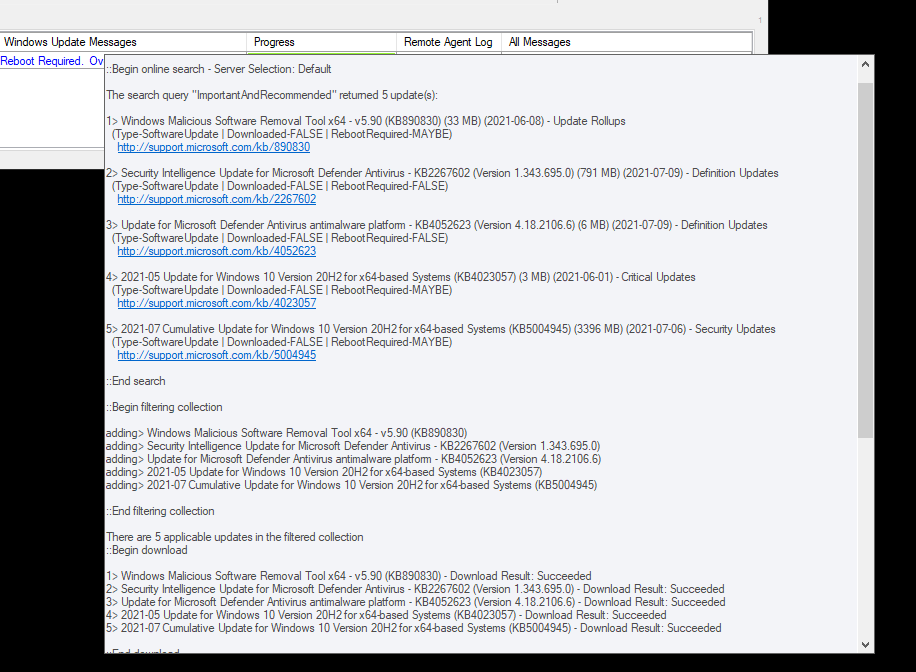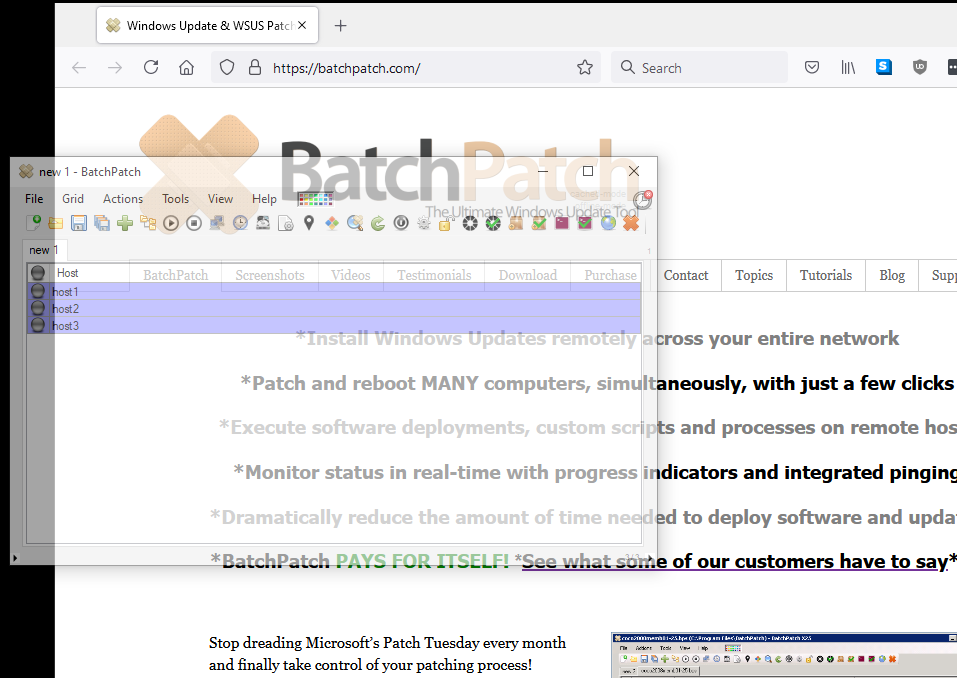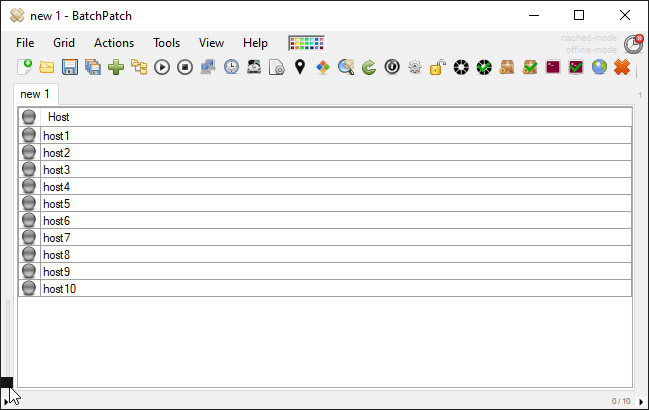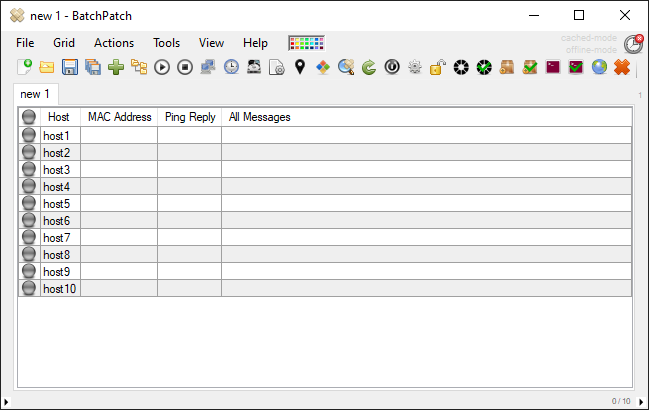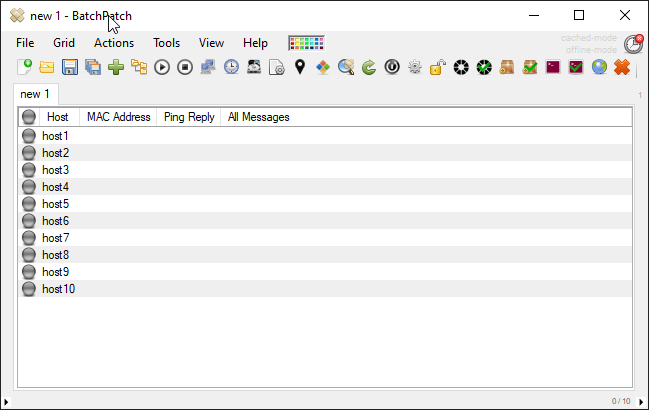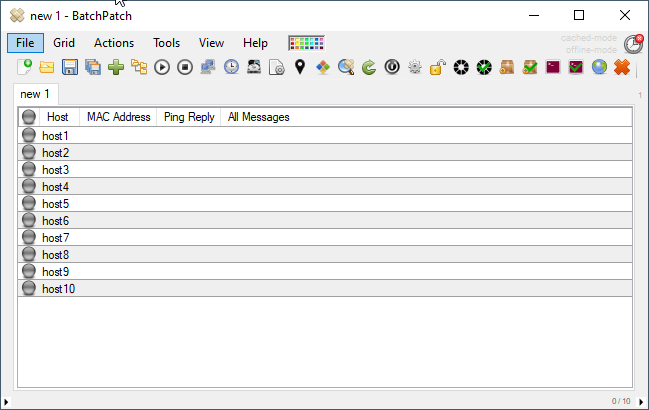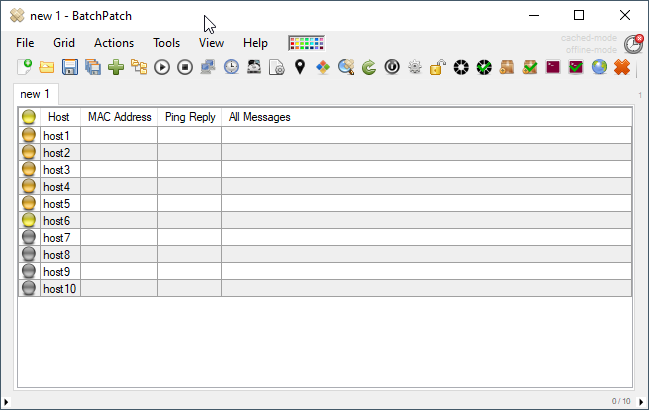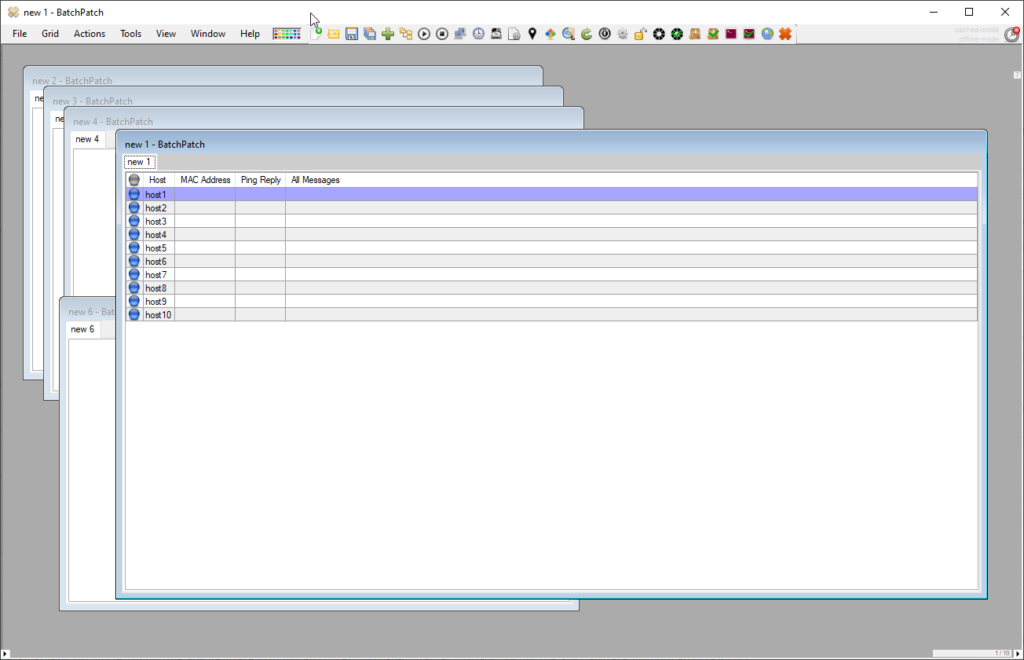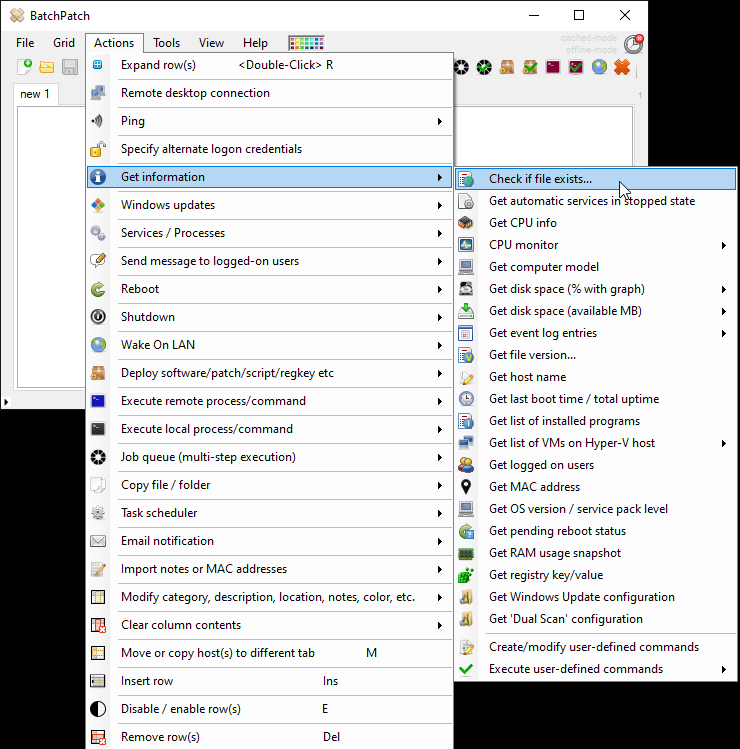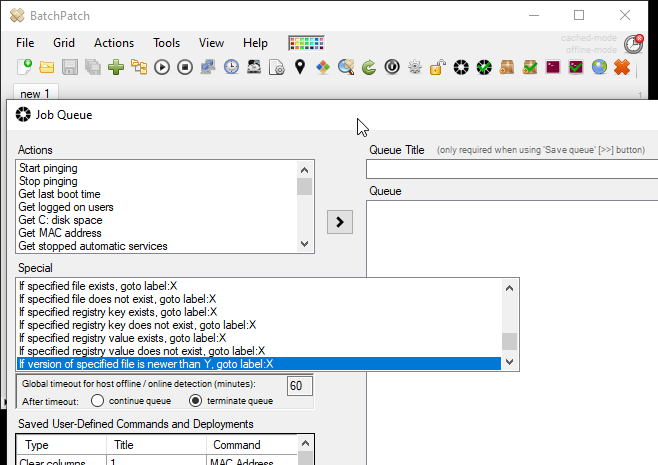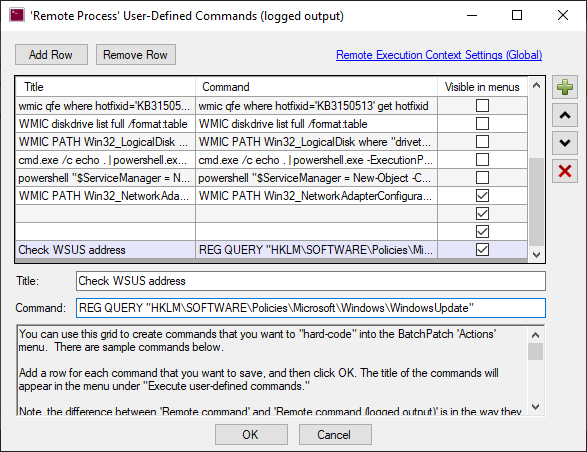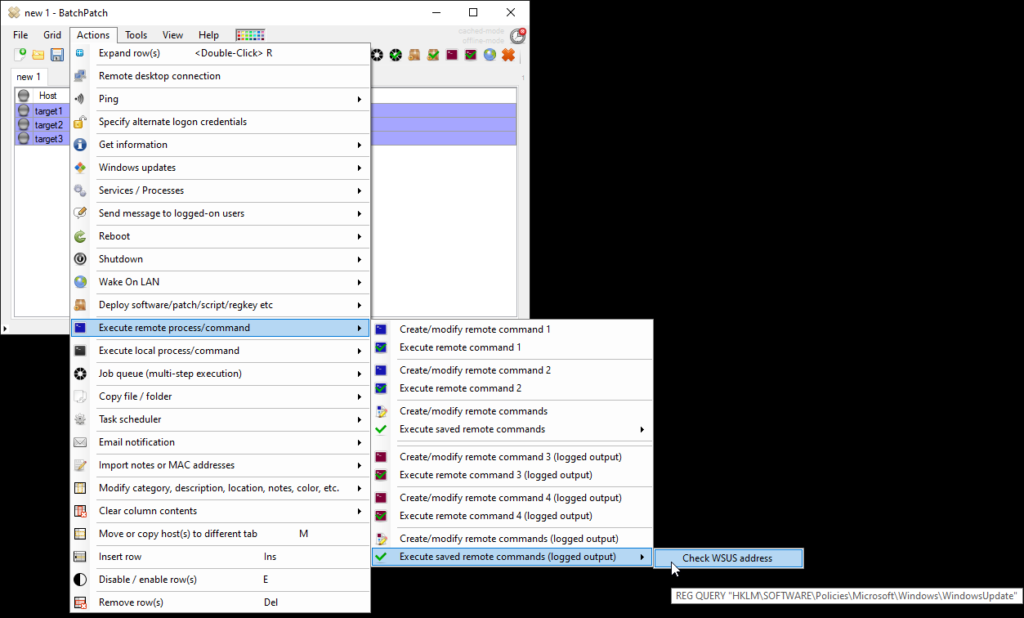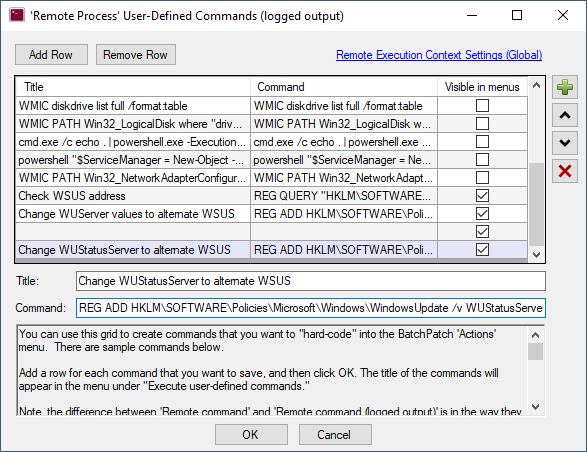One of the most common uses of the BatchPatch ‘Advanced Multi-Row Queue Sequence‘ functionality is to stagger the updates and reboots in a group of computers so that only a single computer or a subset of computers in the group will perform their updates and reboots at any given time. That is, administrators often need to update and reboot machines in a particular order, allowing only certain machines to be updated or go offline at any one time. Today I’m going to illustrate how that is accomplished in a BatchPatch multi-row queue sequence.
For the sake of this example, let’s assume that you have 9 total target computers, and the goal is to update and reboot 3 at a time. The first group of 3 will update and reboot, but the second group of 3 will not be allowed to begin until after all of the first 3 machines have completed their updates and reboots, and are back online. The third group of 3 will not be allowed to begin their process until after the second group of 3 has completely finished and all machines have come back online.
- Create the job queue that you want each target computer to execute when its turn comes in the sequence. For the sake of this example I am going to apply the same job queue to each target computer, but you may configure an individual queue for each target, if desired. It’s completely up to you.
Here is what my job queue looks like. I’m going to use the ‘Apply queue to row(s) without executing‘ button to apply this queue to all of the selected rows in my BatchPatch grid. Since the goal in this example is to make sure that each subset of 3 computers will be back online before the next subset begins processing, I’ve ended the queue with ‘Wait for host to be detected online‘. This means that the queue won’t be complete for any given target until the target is confirmed to be online after its update and reboot steps.
- Now that our queues are configured for each target host, we’ll setup the advanced multi-row queue sequence. First, I’ve added a sequence execution row to the grid. This is a special row that we create for the sole purpose of being able to execute/begin the sequence. The host name for the execution row can be whatever you want. For this example I’ve simply entered a new host called ‘ExecRow’ which will serve as the execution row for my sequence. I don’t have any computers here called ‘ExecRow’. This row is strictly for BatchPatch to use for the advanced multi-row queue sequence.
- Now I’ll select my ‘ExecRow’ and click ‘Actions > Job Queue > Create/modify advanced multi-row queue sequence‘. I’ve titled my sequence “NovemberTutorial”. I use the ‘Create Sequence Execution Row‘ option for my ‘ExecRow’. Then I click “Apply values to selected row(s)“.
- For the 9 hosts that will be members in this sequence, now I just need to apply the sequence position number to each of them. The sequence name must be the same as what I used for the execution row. It’s the sequence name that tells BatchPatch which execution row applies to which target computers, so you must apply the same sequence name to all target hosts that you want to be part of the same sequence. In the screenshot below you can see that I have applied the sequence name “NovemberTutorial” to all of the rows. I have set a sequence position number 1 to host1, host2, host3. I have set the sequence position number 2 to host4, host5, host6. And I have set the sequence position number 3 to host7, host8, host9.
- Now all we have to do is execute the sequence. To execute the sequence on-demand, simply select the ‘ExecRow’ and use ‘Actions > Job Queue > Execute advanced multi-row queue sequence‘. However, if you want to setup the sequence to run as a scheduled task, simply select the ‘ExecRow’ and use ‘Actions > Task Scheduler > Create/modify scheduled task‘. Then in the task drop-down menu use ‘Execute advanced multi-row queue sequence‘. And of course make sure to enable the scheduled using the timer/clock icon in the upper right corner of the BatchPatch window (green is enabled, red is disabled).
When the sequence executes, first host1, host2, and host3 will begin their patch and reboot process. After all three machines have completed their job queues and come back online after the wait period we specified in the job queue, host4, host5, and host6 will begin processing. When those three complete and are all back online, then finally host7, host8, and host9 will begin processing.


